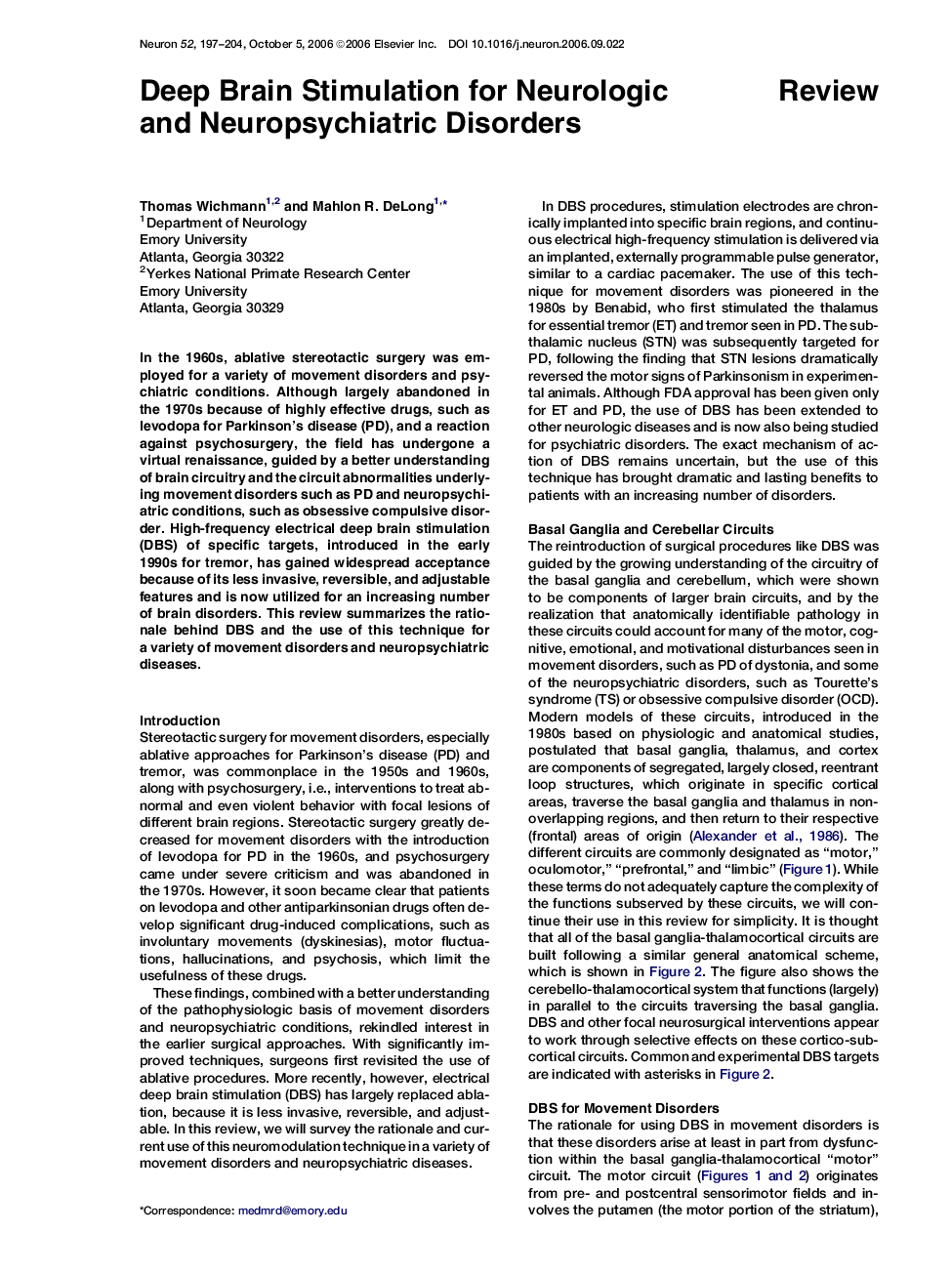| Article ID | Journal | Published Year | Pages | File Type |
|---|---|---|---|---|
| 4323075 | Neuron | 2006 | 8 Pages |
In the 1960s, ablative stereotactic surgery was employed for a variety of movement disorders and psychiatric conditions. Although largely abandoned in the 1970s because of highly effective drugs, such as levodopa for Parkinson's disease (PD), and a reaction against psychosurgery, the field has undergone a virtual renaissance, guided by a better understanding of brain circuitry and the circuit abnormalities underlying movement disorders such as PD and neuropsychiatric conditions, such as obsessive compulsive disorder. High-frequency electrical deep brain stimulation (DBS) of specific targets, introduced in the early 1990s for tremor, has gained widespread acceptance because of its less invasive, reversible, and adjustable features and is now utilized for an increasing number of brain disorders. This review summarizes the rationale behind DBS and the use of this technique for a variety of movement disorders and neuropsychiatric diseases.
